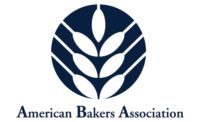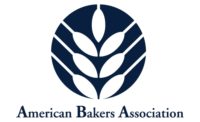Supporting All Grains, Both Whole and Enriched
By Judi Adams, MS, RD
President
Grain Foods Foundation
Hooray for the PB&J! A recent survey conducted by Harris Interactive for the Grain Foods Foundation shows that sandwiches are still the top choice for kids’ lunches across the country.
Of those parents surveyed who pack a lunch for their child, 80% pack a sandwich. Peanut butter and jelly, a long-time favorite for generations, is still the most popular combination according to these sandwich-making parents. And the bread used for those sandwiches is still good old-fashioned white bread. In fact, a whopping 84% of parents with children under the age of 12 typically use enriched white bread for making sandwiches.
This is great news for the baking and milling industries — as the low-carb craze seems to have made little impact on the eating habits of kids across the country. Nearly two-thirds of parents (63%) who make sandwiches for their child’s lunch say they will make them as often for their child this year as compared to last year. In fact, one in four plans to make sandwiches more often for their child’s lunch this year.
Parents who make sandwiches also are eating sandwiches themselves, underscoring the importance of enriched grains in the lives of Americans of all ages.
But the post-Atkins era has resulted in a low-carb hangover for many American consumers. Although whole grains have become the darling of the food world, enriched grains continue to be portrayed as “bad carbs.” Emerging trends like the glycemic index are gaining interest from many former Atkins proponents.
The theory behind the glycemic index is to measure and index foods based on how they impact blood sugar levels. In practice, this leads to a confusing and complex set of calculations, too involved for the majority of consumers to effectively manage their diets. Further, new research demonstrates that, as of yet, glycemic index has no real-life correlation to weight control or overall health improvement. It is a telling sign that no major American health/medical organization has endorsed the use of glycemic index. Simply put, it’s too complex, it’s too confusing and the science simply is not strong enough to support its widespread application. Consuming fiber-rich and whole-grain foods will accomplish what the glycemic index is purported to achieve, in a much less confusing manner.
The Grain Foods Foundation is committed to supporting all grain foods — whole and enriched — and their role in a healthy and productive lifestyle. In fact, the new U.S. Department of Agriculture’s Food Guide Pyramid recognizes the importance of all grains for optimal health. While whole grains offer an excellent source of fiber and numerous phytonutrients, vitamins and minerals, fortified enriched-grain products remain an essential source of the major B vitamins and iron, such as disease-preventing folic acid, for millions of children and adults.
I would like to extend a heart-felt thank you to all investors of the Grain Foods Foundation and to Snack Food & Wholesale Bakery magazine for the dedication and support in our inaugural year. Your involvement has been critical to the success of our campaign — and is essential for the foundation to achieve its long-term goals.
We encourage all grain-based food companies and related organizations to join the foundation and participate in our multiyear campaign dedicated to wholesome goodness, common sense and the great taste of grain foods.
For more information on the foundation, visit www.grainpower.org or call 1-970-626-5183.





